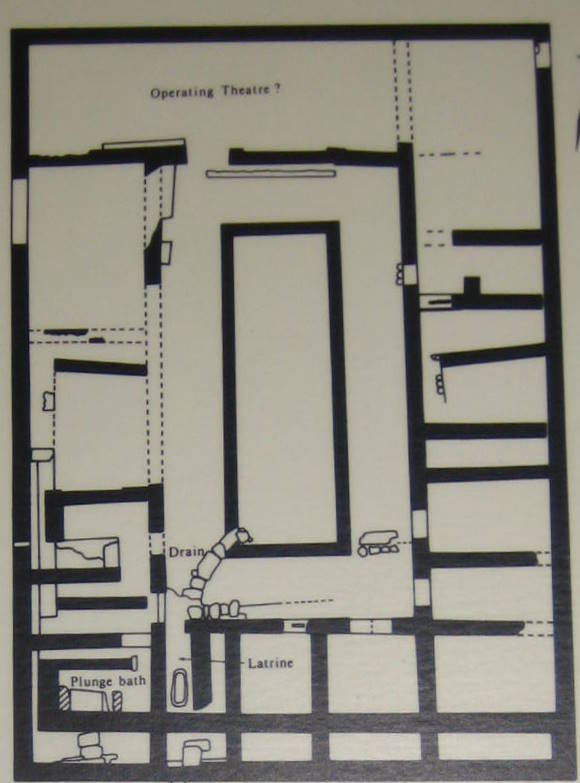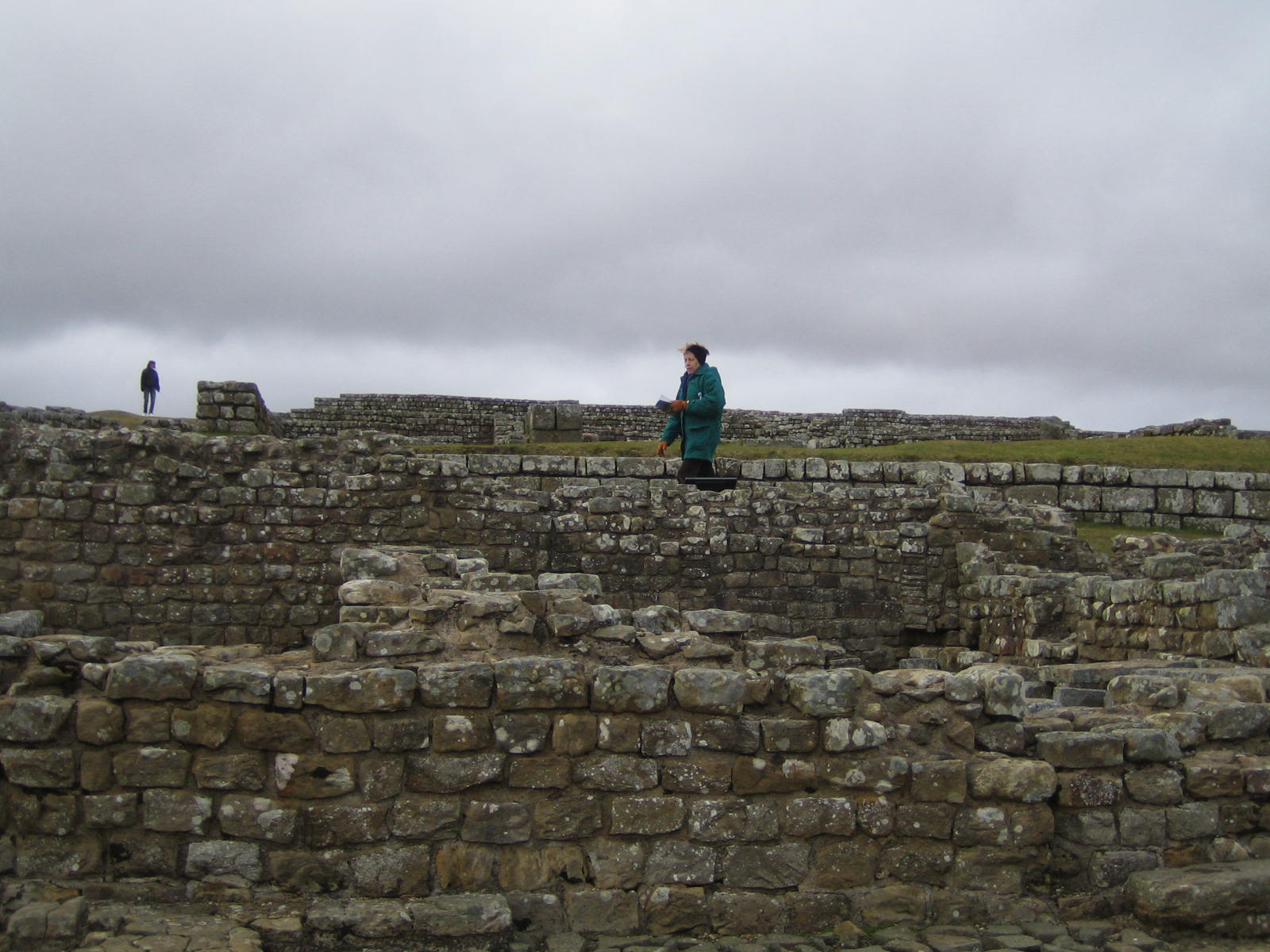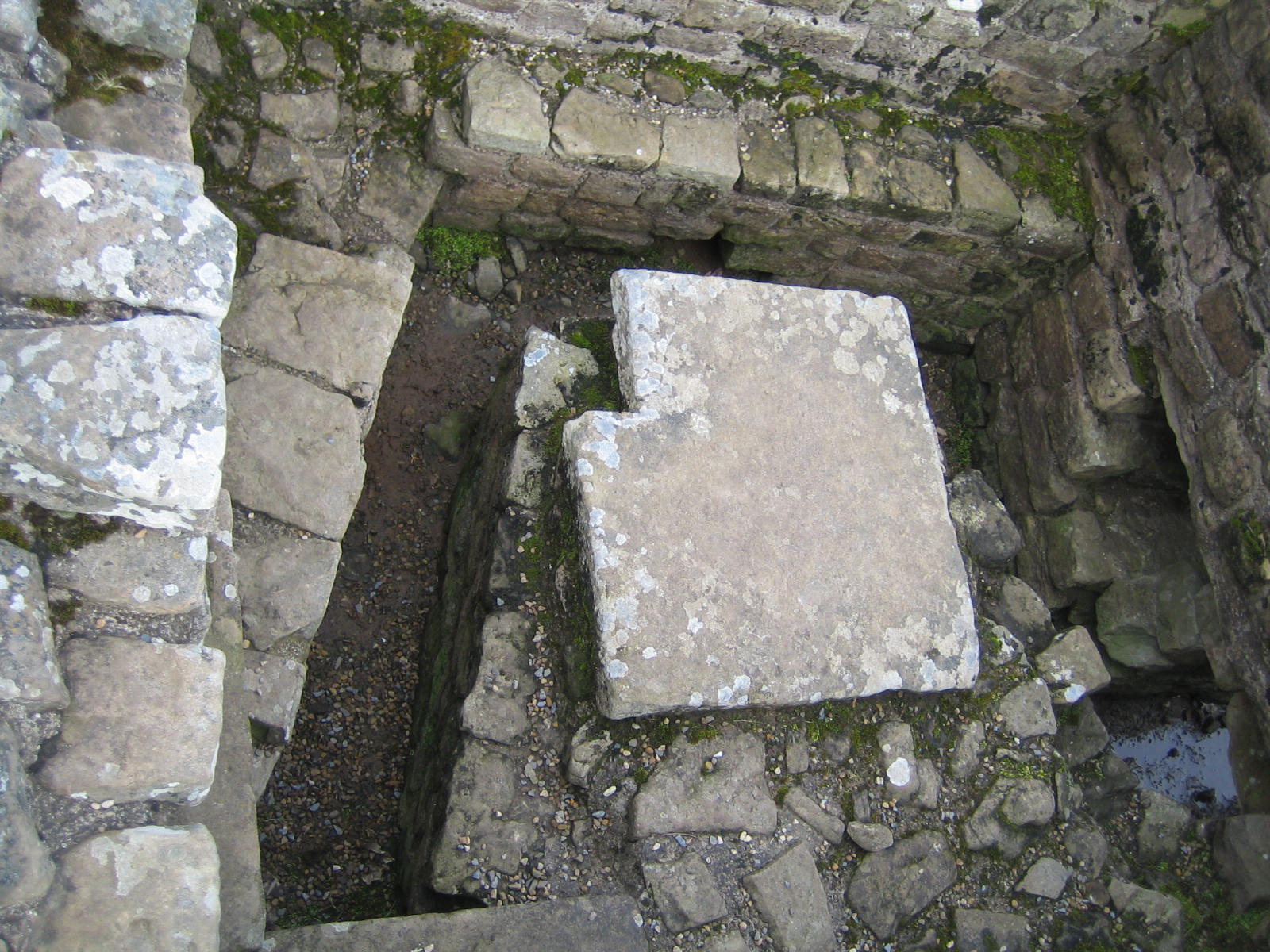

Left: the plan of the hospital; below: a fuzzy model of the building -- both from the Housesteads Museum; above: a drawing at the ruins site.

Housesteads' hospital was constructed around a central courtyard but most of its stones were appropriated to build a farmhouse found sitting on the site in the 1700s.
 |

Left: the plan of the hospital; below: a fuzzy model of the building -- both from the Housesteads Museum; above: a drawing at the ruins site.
|
Below we see Jane walking around the north end of the hospital with the granaries in the background. Most Roman military posts had hospitals and physicians in the army had distinct titles and career paths and were given the social rank of knight, a prestigious honor. In battle, special soldiers were assigned to collect the wounded and deliver them to a first-aid station. (They were paid by the number of wounded they retrieved!) Transported by horse cart, the wounded would eventually make their way to a hospital such as this place. Hospitals were organized around courtyards bordered by patient barracks and private rooms. Herbs may have grown in the courtyard to treat the sick.
Although ignorant of bacteria, Roman military doctors understood sanitation and water was piped in uphill from the latrines, flowed through the camp, and flushed out the latrines constantly. (Romans were unsurpassed in public health concerns: Today nearly half the world's population has less access to clean water and sewers than did inhabitants of ancient Rome; half of hospital beds are occupied by victims of easily preventable waterborne diseases.[63]) If need be, diseased patients could be sequestered. (Disease killed far more soldiers than arms up until recent times. No country practiced biological warfare, but all armies were victims of it). A case can be made that medicine got no better than what the ancient Romans practiced until the 20th century. (Some today may argue with "better.") Forty years after Hadrian built his wall, the Greek physician Galen appeared in Rome and set down medical principles unquestioned until the Renaissance. Romans appeared to provide better medical care for their soldiers than for the general population. Why not? The terms of enlistment for a Roman legionnaire was 16-25 years. It made sense to take care of a trained asset with that kind of useful military life.
 |
We see no hypocausts here, so this must have been a pretty cold place in the British winter as it relied on hearths for heating. Below is the major trench of the hospital latrine where water would flow continuously before draining downhill out of the fort. Wood or stone seats would sit on top of this trench..

|
![]()
This
work is licensed under a Creative
Commons Attribution-NonCommercial-NoDerivs 2.5 License.